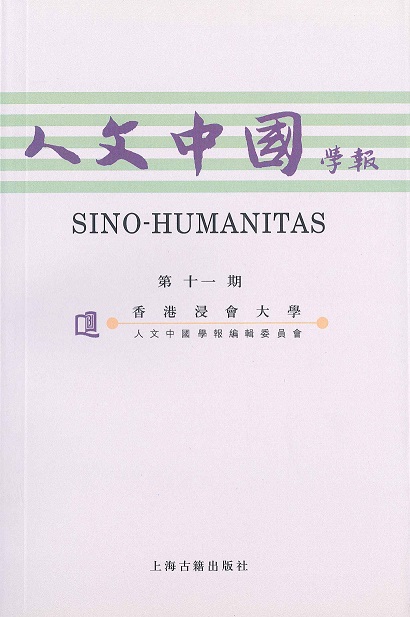《漢語大字典》義項辨正八則
A Discussion of Eight Lexical Items in Hanyu Dazidian
DOI:
https://doi.org/10.24112/sinohumanitas.112442Abstract
LANGUAGE NOTE | Document text in Chinese; abstract also in English.
《漢語大字典》是我國規模宏大的字典,專家學者參與編訂之多,可説空前。全書共收五萬六千餘字,注重形、音、義的配合,深入探討漢字的内在義蘊,資料繁富,解釋精審,是現今最具影響力的字典。然而,中國文化深厚悠長,典籍浩如烟海,字典在材料的選取、理解方面,不免有遺漏、誤釋的地方,如“遇”字,字典“遇”第一類第一義項是“相逢,不期而會”,其意爲“偶遇”。“遇”固有“偶遇”之意,但亦有不少語料顯示所“遇”並非偶然,因此,“遇”字如單以“偶爾相值遇”爲解,則未能全面顯示“遇”的意義。又如“治”字,字典第二類第四義項爲“有秩序;嚴整”,並引《釋名•釋言語》“治,值也。物皆值其所也”爲證。《釋名》以“值”釋“治”,其義爲“相當”、“恰當”而非“有秩序;嚴整”。又第十義項“爲;作”,字典引《爾雅•釋話下》“治,故也”及清郝懿行《爾雅義疏》“治與事聲義近......事訓治,治亦訓事”之説爲證。可是“治”無“故”義,而郝懿行的訓釋亦大有問題,字典不察,引以爲據,因而致誤。再如“在”字,字典“在”字第六義項爲“存問”、“問候”,書證爲《左傳•襄公二十六年》:“寡人淹恤在外,二三予皆使寡人朝夕聞衛國之言,吾子獨不在寡人。”杜預注:”在,存問之。”杜預之説,顧炎武早已指出其不當之處,字典却没接納。以上種種,是未有對古籍作根本性考辨的結果。本文就眼下所及,檢查“遇”、“盛”、“即”、“治”、“且”、“在”、“從”、“冒”八字相關義項,對其中的問題作進一步的探討,以供《漢語大字典》將來修訂時參考。
Hanyu Da Zidian has long been considered the most authoritative dictionary in China. The sheer number of prominent linguists, academics and lexicographers who had helped its compilation is monumental. The dictionary has a total of some 56,000 entries. Semantic, syntactic and phonological properties of each entry, as well as the evolutionary nature of the "shape" of the character, are analysed in detail. Each entry has explanatory notes that explore thoroughly its semantic properties and the nuances of its shifting meanings. It has therefore been regarded as a definitive work. However, because of the vast variety of works involved, and the extensive history of Chinese civilization, there are unavoidably inaccuracies and inadequacies found in the Hanyu Da Zidian, in terms of its selection of characters, coverage, and clarity. This essay attempts to re-examine semantically eight lexical items from the dictionary. They are namely yu (遇), sheng(盛), ji(即), zhi(治), qie(且), zai(在), cong (從)and mao(冒). It is hoped that the re-examination of the items would offer possible suggestions for improving and refining the Hanyu Da Zidian.
Published
How to Cite
Issue
Section
License
Copyright (c) 2005 人文中國學報

This work is licensed under a Creative Commons Attribution-NonCommercial 4.0 International License.
The CC BY-NC 4.0 license permits use, distribution and reproduction in any medium, provided the original work is properly cited and not used for commercial purposes. Copyright on any article is retained by the author(s) and the publisher(s).




